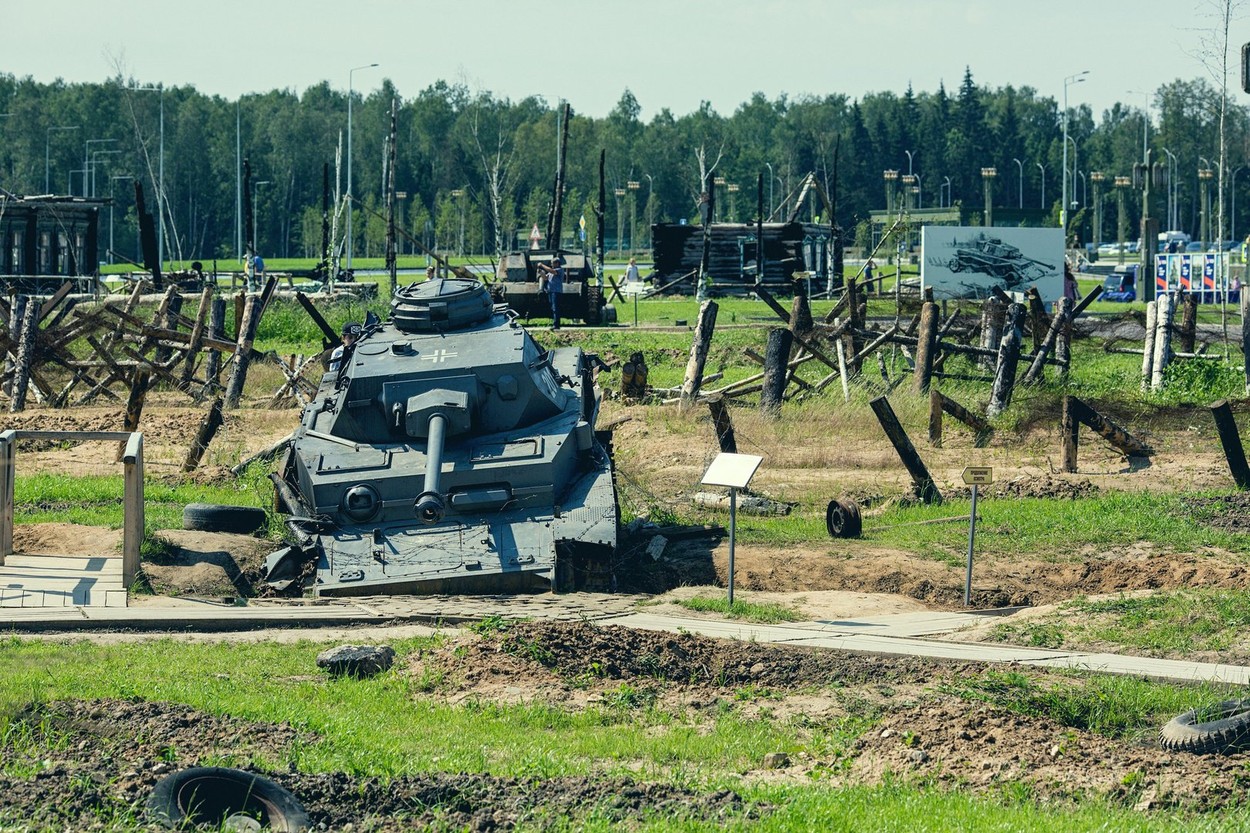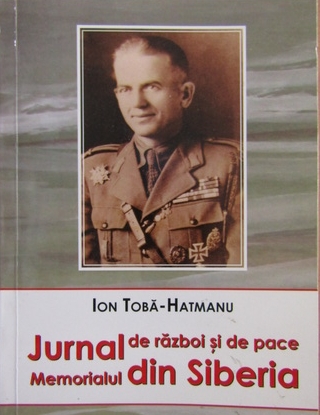
The official historiography of the communist period never spoke about the sad period of memory in the history of Romania from the summer of 1940. For decades, the USSR was a “great friend from the east”, to whom we owe “liberation from the fascist yoke”.
1940 was probably the darkest year in the history of Romania. In the summer of the same year, our country loses important territories to its neighbors. In this turbulent climate, one of the most extraordinary military feats in Romanian military history takes place.
The hero of this event is Captain Ion Toba, nicknamed Hatmanu, commander of the 25th Cavalry Squadron. In general, this person’s life was like a Hollywood movie. Unfortunately, his name is not mentioned in any historical book. They forgot about it.
The historical context of the attack on Putna
It is a well-known fact that King Charles II did not reach the level of clairvoyance of his predecessors Charles I or Ferdinand. During the totalitarian regime, in the summer of 1940, Romania suffered the greatest territorial losses in its history.
Thus, according to the Ribbentrop-Molotov Pact, signed a year earlier, on August 23, 1939, Romania would be forced to cede important territories to Soviet Russia. We mean Bessarabia, Bukovina and the Land of Herta.
Additional Protocol No. 5 of this pact divided Eastern Europe between two great powers — the USSR and Nazi Germany. The Soviet side claimed these territories in order to get closer to the mouth of the Danube, which was an important strategic goal for it. Although these regions were inhabited mainly by the Romanian population, it did not matter.
In fact, Bessarabian Romanians were subsequently deported en masse, the population partially replaced by ethnic Russians until Romania entered the war a year later in the summer of 1941.
In this dramatic context, the events around Putna take place, the main character of which is Captain Ion Toba. After the Soviet ultimatum, Romania had to withdraw its army and administration from Bessarabia. This was accepted because the Romanian army was unable to withstand the Soviet colossus.
As a result, the Romanian troops were ordered not to open fire on the Soviet troops, as the Romanian authorities wished to avoid unnecessary bloodshed.
It should be noted that the exact line of the new border was quite vague, which gave the Soviet authorities the opportunity for numerous abuses. Such a tense moment was also in the case of the Putna monastery, which was located near the new Romanian-Soviet border, established after the ultimatum given by the dictator Stalin.

World War II reconstruction Photo: Borys Zhitkov / Alamy / Alamy / Profimedia
A happy conversation attracts the attention of Ion Tobe-Hatman, “Bolshevik Partisan Hunter”
The Putna Monastery was temporarily occupied by the Russians, who were going to capture all of Bukovina, in July 1940.
Hutman was born in Bordei Verde/Plaza Viziru, Braila District in 1903. Not much is known about Hutman’s youth, partly due to the oblivion of his deeds. Military archives show that Ioan Toba graduated from the Active and Cavalry Officers’ School and studied law while in the army from 1925.
Its existence became known to the general public thanks to a chance discussion between Dan Giju, former director of the Military Publishing House, and Mariana Dragescu, one of the members of the famous “White Squadrons”, the air medical unit that saved so many lives. wounded Romanian soldiers on the eastern front.
Yes, Mariana Dragescu also talked about the nickname that Ion Toba proudly wore, the Hat. This was due to the fact that, after Romania’s entry into the war on the Eastern Front, he was the head of a detachment that pursued Russian partisans who attacked the quartermaster troops of the Romanian army.
Rescue Putna
But the act for which the Hat will remain in history is, without a doubt, the expulsion of the Russian soldiers who occupied Putna on July 6, 1940. Although not recorded in the military archives, the incident is still supported by witnesses of the day.
And not only that, Yoan Toba describes in detail in his own war diary the movement of the army he leads from one area to another, not far from Putna, around July 6.
The fact that the events are not just fiction, the specified places are confirmed by the operational documents of the 25th Rifle Division, which includes a squadron commanded by the nickname Gatman.
The incident in question is all the more remarkable because the Putna monastery was supposed to remain within the borders of Romania after the forced redrawing of the country’s borders. Between July 5 and 7, an extremely confusing situation developed in the district, the archives do not say much about what happened.

It is reliably known, partly from the archives of the 25th Infantry Division, partly from Gatman’s personal diary, that he, having learned about the situation in Putna, galloped at the head of the cavalry squadron led by him, liberating the monastery from the army. Soviet occupiers, after which he transferred control over the area to the Romanian border guards. It is certain that without his actions, Putna would still not be Romanian today.
The troupe arrives at the Putna Monastery at 9:10 p.m. and “reconnaissance is conducted, then the ground is cleared. The village and the monastery were liberated by force, the suspects were arrested, elements of the Red Army were disarmed and thrown across the demarcation line. A division is being created to guard the holy tomb of Stephen the Great and the smells of the monastery,” Toba writes in his diary.
Later, the Hat would operate on the eastern front, where, as I said, he would fight against the Bolshevik partisans, an extremely dangerous mission, where he would earn the nickname “Bolshevik Hunter”. This is the period when he will be awarded many times, in particular, Military Virtue, 1st class – Gold, as well as the Star of Romania.
The events of August 23 caught him in Germany
On July 29, 1944, he left for training in Germany, where he was surprised by the events of August 23, 1944.
Therefore, Major Ion Toba decided to join the special forces “Jagdverband Kommando Skorzeny Sud-Ost” of the famous Otto Skorzeny (the one who saved Mussolini from the hands of the Italian partisans).
Cluj-based historian Ottmar Traske says that Major Ion Tobe was not involved in war crimes, even though he was part of an SS unit.
“Regarding Major Ion Tobe’s enlistment in the SS, many questioned this fact. Well, information is only as real as it gets. Although Ion Toba was part of the “SS-Jagdverband Südost”, he was not involved in war crimes, atrocities, etc. As I have shown before, the “SS-Jagdverbände” were regular units formally subordinate to the SS, but the officers, non-commissioned officers and soldiers mostly came from the famous “Brandenburg” division.
Ion Toba, as well as his family, suffered for these actions. After returning to his homeland, Gatman was handed over to the Soviet authorities, who deported him to Siberia, from where he returned only in 1955. After returning to his homeland, he was imprisoned in communist prisons, from where he was released under the amnesty of 1964. Ion Toba lived until 1979, living in Brasov.
Literature:
– Gherghe, Dan, the last guard of Stephen the Great – Captain Ioan Toba Hatmanul, a hero buried in history; January 21, 2013; Free Romania
– Ioan Scurtu, Teodora Stanescu-Stanciu, Georgiana Margareta Scurtu, History of Romanians between 1918-1940
– Ioan Scurtu, Year 1940. Drama of Romanians between Prut and Dniester.
– Constantin Sănătescu, Journal of General Sănătescu
Read other articles on this topic written by Andrii Stan:
- Will Bakhmut survive the siege? History of the “pockets” of Demyansk and Cherkasy – Korsun
- Witold Pilecki, a Polish hero whose memory the Russians want to erase
- The real story of the hit TV series “Valley of Sorrows” / A war in which Israel could be wiped off the world map
- Why are Russians afraid of Leopard-2 tanks? / The T-90 tank or where Russia went wrong
- “Uranus”, a very successful operation of the Russians near Stalingrad / Try the Kremlinthe same strategy for Kyiv?
- Why the Battle of Bakhmut is remarkably similar to the Battle of Verdun
- Operation “Maritsa” or the real reason why the Germans did not occupy Moscow
- “White shirt attack”, one of the most glorious and crazy Romanian military actions
- The military campaign of the Russians, which was a resounding success. The history of the counteroffensive, which was the basis of the German blitzkrieg
- The battle in which the Russian general sent 11 thousand Romanian soldiers to their deaths
- “Not a step back”: the famous Stalin’s order 227 and blockade special forces
- Battle of Wizna or “Polish Thermopylae”
- The story of Andriy Vlasov, Stalin’s successful general who defected to the Germans: Traitor or anti-communist?
- Who was Stepan Bandera: a hero for Ukraine, a terrorist for Russia/ Putin mentioned in his speech on Victory Day
- Lend-Lease or how the USA helped Russia not to disappear
- The Ukrainian genocide that Russia would like to forget
- Russia’s behavior then and now: from Katyn to Buchi, or how Russian propaganda tries to change history
- The Battle of Turtukaia is one of the most shameful defeats in the history of the Romanian army
- The history of two Chechen wars: Russia “wanted” and then “quick and clean” intervention
- Why the blitzkrieg of the Russians in Ukraine failed
Source: Hot News
Ashley Bailey is a talented author and journalist known for her writing on trending topics. Currently working at 247 news reel, she brings readers fresh perspectives on current issues. With her well-researched and thought-provoking articles, she captures the zeitgeist and stays ahead of the latest trends. Ashley’s writing is a must-read for anyone interested in staying up-to-date with the latest developments.